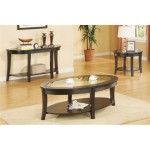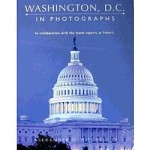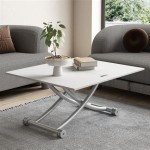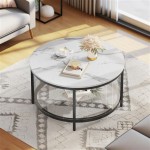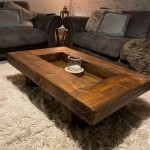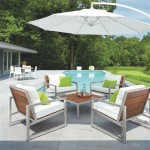How to Print a Coffee Table Book
The creation and printing of a coffee table book is a multifaceted process demanding careful consideration of design, content, and printing specifications. A coffee table book, often characterized by its large format, visually driven content, and high-quality production, serves as both a conversation starter and a statement piece. Successfully printing such a book requires meticulous planning and collaboration with experienced professionals. This article will delve into the essential aspects of the coffee table book printing process, providing a guide to navigate the complexities involved.
Content Curation and Design
The foundation of a compelling coffee table book lies in its content. Whether featuring photography, art, architecture, travel, or a specific historical subject, the content should be carefully curated and meticulously organized. The selection process must prioritize visual appeal, storytelling potential, and overall cohesion. Quality is paramount; blurry or poorly composed images will detract from the book’s intended impact. Text should complement the visuals, providing context, historical information, or artistic interpretation without overwhelming the reader. A well-defined theme or narrative will enhance the reading experience and establish a clear purpose for the book.
Design plays a crucial role in shaping the book's aesthetic and readability. The layout should be visually engaging, employing a variety of page designs to maintain reader interest. Image placement, typography, and white space should be carefully considered to create a balanced and harmonious composition. Professional graphic designers specializing in book design are essential for this stage. They can ensure that the design aligns with the book's theme, enhances the visual impact of the content, and adheres to industry best practices for readability and visual appeal.
The choice of typography significantly impacts the overall aesthetic and readability. Selecting fonts that complement the visual content and are easy to read is crucial. Using a limited number of fonts (typically two to three) will maintain consistency and prevent visual clutter. Consideration must be given to font size, line spacing, and kerning to ensure optimal readability. Titles, headings, and body text should be clearly distinguished, creating a visual hierarchy that guides the reader through the content.
Image resolution is critical for achieving high-quality prints. Low-resolution images will appear pixelated and blurry when enlarged, significantly detracting from the book’s visual impact. Images should be scanned or saved at a minimum resolution of 300 DPI (dots per inch) at the desired print size. This ensures that the images retain their clarity and detail when printed. Professional photographers and photo editors can assist in optimizing images for print, adjusting color balance, sharpening details, and removing any imperfections.
Color management is another critical aspect of design preparation. Different monitors display colors differently, and the colors seen on screen may not accurately reflect the colors that will be printed. To ensure accurate color reproduction, it is essential to use a color-managed workflow. This involves calibrating monitors, using color profiles, and working in a standardized color space such as CMYK (Cyan, Magenta, Yellow, Black), which is the standard for print. Proofing the design with a professional print shop is also crucial to identify and correct any color discrepancies before the final print run.
Selecting Printing Specifications
Choosing the right printing specifications is essential for achieving the desired look and feel of the coffee table book. The selection process involves considering various factors, including paper stock, printing method, binding style, and finishing options. Each of these elements contributes to the book’s overall quality, durability, and aesthetic appeal. Making informed decisions requires a clear understanding of the available options and their impact on the final product.
Paper stock is a fundamental element that impacts the book’s tactile quality and visual appearance. Coated paper stocks, such as gloss or matte, are commonly used for coffee table books because they enhance image clarity and color saturation. Gloss paper provides a high-shine finish that makes images appear vibrant and sharp, while matte paper offers a more subdued, elegant look with reduced glare. Uncoated paper stocks, while less common, can be used to achieve a more natural or rustic aesthetic. The weight of the paper stock also affects the book’s feel and durability. Heavier paper stocks, such as 100 lb or 120 lb, provide a more substantial feel and are less prone to tearing or wrinkling.
The printing method influences the quality and cost of the final product. Offset printing is the most common method for coffee table books, as it offers high-quality image reproduction and consistent color accuracy. Offset printing involves transferring ink from a metal plate to a rubber blanket and then to the paper. This process allows for fine detail and smooth gradients, making it ideal for reproducing photographs and artwork. Digital printing, while less expensive for small print runs, may not offer the same level of quality and color accuracy as offset printing. Digital printing is suitable for projects with variable data or short print runs where cost is a primary concern.
Binding style affects the book’s durability and how it lays open. Case binding, also known as hardcover binding, is the most durable and prestigious binding style for coffee table books. Case binding involves sewing or gluing the book's sections together and then attaching them to a hard cover. This creates a book that is both sturdy and long-lasting. Perfect binding, where the pages are glued together along the spine, is a more affordable option but may not be as durable as case binding. Saddle stitching, where pages are folded and stapled along the spine, is suitable for books with a small number of pages. Wire-O binding, which uses metal loops to hold the pages together, allows the book to lay flat but is less commonly used for coffee table books.
Finishing options can add a final touch of elegance and protection to the coffee table book. Lamination, which involves applying a thin layer of plastic film to the cover, provides protection against scratches, smudges, and moisture. Spot UV coating can be used to highlight specific areas of the cover, such as the title or a design element, creating a visually striking effect. Embossing, which involves creating a raised or depressed image on the cover, adds a tactile dimension and enhances the book’s perceived value. Foil stamping, which involves applying a metallic foil to the cover, can create a luxurious and eye-catching effect.
Working with a Printer
Selecting and collaborating with a reputable printer is a critical step in the coffee table book printing process. A printer with experience in producing high-quality art books and a strong track record is essential. The printer should be able to provide guidance on paper selection, printing methods, binding styles, and finishing options, helping to optimize the book’s quality and cost. Effective communication and collaboration are key to ensuring that the printer understands the project’s goals and delivers a product that meets or exceeds expectations.
Obtaining quotes from multiple printers is a best practice. Comparing quotes from different printers allows for a comprehensive assessment of pricing, services, and capabilities. The quotes should include a detailed breakdown of costs for each aspect of the project, including prepress, printing, binding, finishing, and shipping. It is important to consider not only the price but also the printer’s experience, reputation, and customer service. Requesting samples of previous work can provide valuable insights into the printer’s quality and capabilities.
Providing the printer with clear and comprehensive specifications is essential for accurate pricing and efficient production. The specifications should include details about the book’s size, page count, paper stock, printing method, binding style, finishing options, and quantity. Providing high-resolution digital files that adhere to the printer’s requirements is also crucial. The printer may require specific file formats, color profiles, and image resolutions to ensure optimal print quality. Working closely with the printer to address any technical questions or concerns will help to avoid costly errors and delays.
Proofing is a critical step in the printing process. Proofing allows for the review of the book’s layout, color accuracy, and overall quality before the final print run. Soft proofs, which are digital versions of the book, can be used to review the layout and typography. However, soft proofs may not accurately represent the colors that will be printed. Hard proofs, which are physical prints of the book, provide a more accurate representation of the final product. It is important to carefully review the proofs and provide the printer with detailed feedback. Any corrections or changes should be clearly communicated and verified before proceeding to the final print run.
Managing the production schedule is essential for ensuring that the coffee table book is delivered on time and within budget. The printer should provide a detailed production schedule that outlines each stage of the process, from prepress to shipping. Regular communication with the printer is crucial for monitoring progress and addressing any potential delays. It is important to factor in sufficient time for proofing, revisions, and shipping to avoid last-minute surprises. A well-managed production schedule will help to ensure that the coffee table book is printed and delivered to the desired specifications and timeline.

How To Print A Coffee Table Book Capture The Moment

Premium Coffee Table Book Printing Star Print Brokers

Coffee Table Book Printing

Coffee Table Books Star Print Brokers

Coffee Table Books Picatype

High Quality Coffee Table Book Printing Pulsio Print

Coffee Table Book Printers Star Print Brokers

Coffee Table Book Printing Self Publish Your Work With Printnia

Coffe Table Books Pre Press Offset Printers Uv Printing Drip Off Soft Touch Pio

Affordable Best Book Printing Binding Services Woodbridge Publishers
